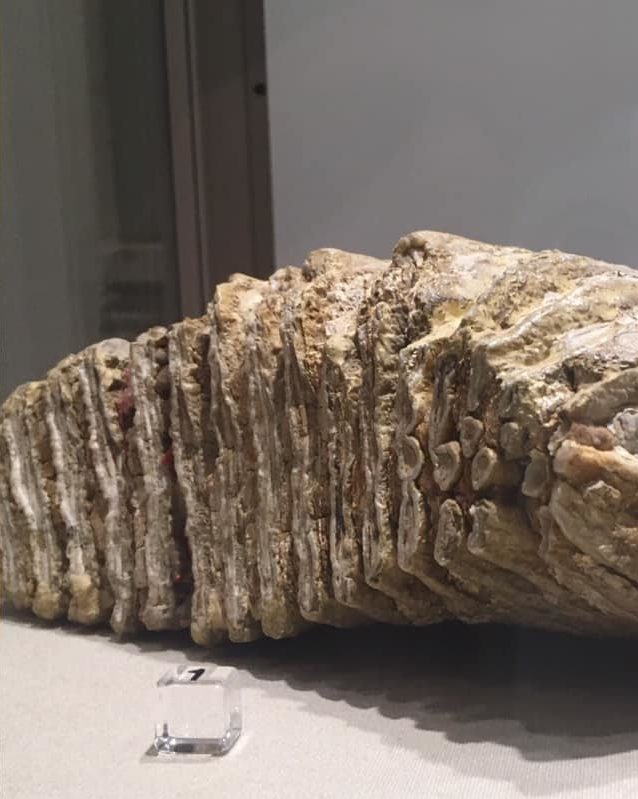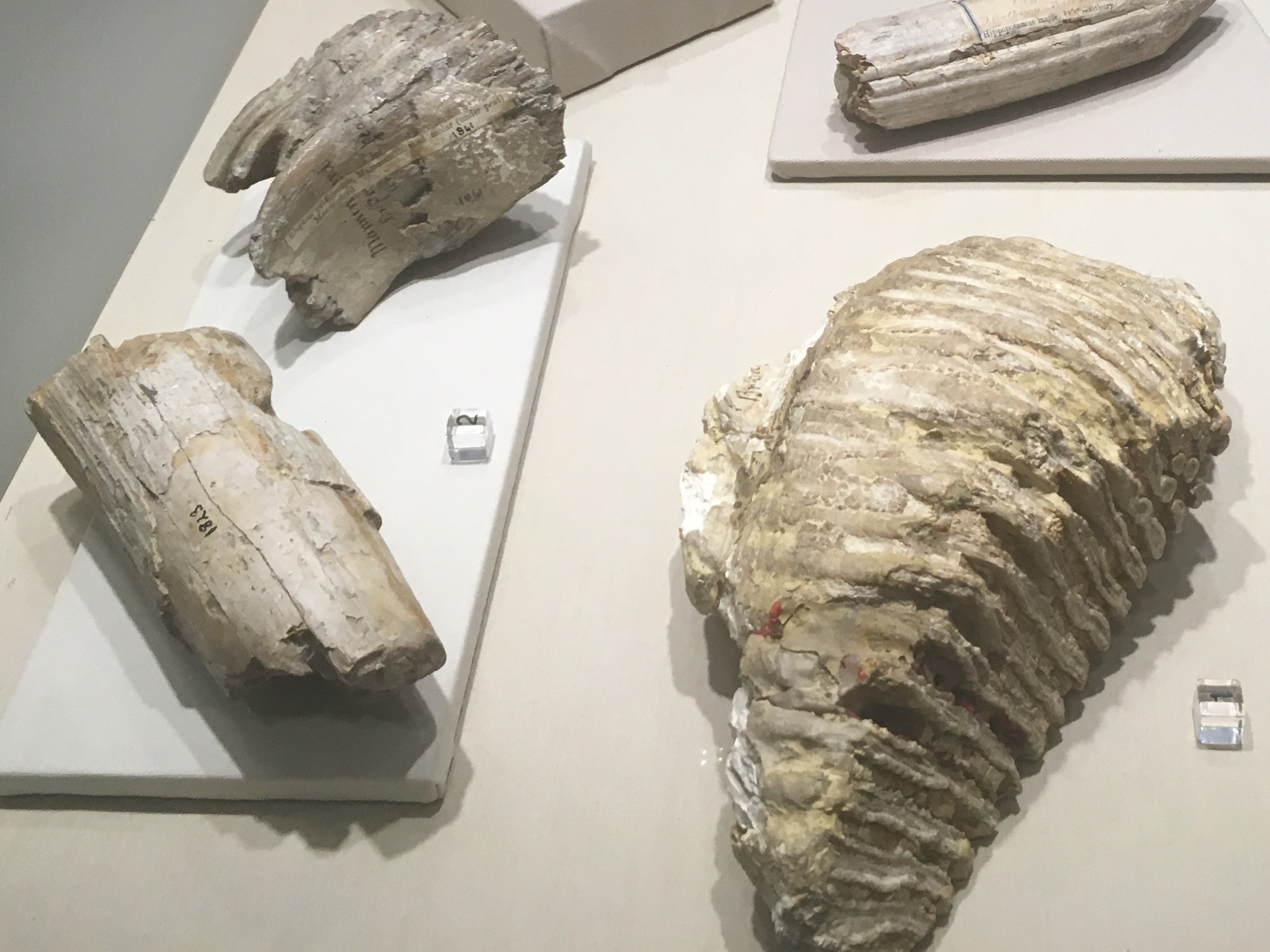A mammoth molar...
We have several mammoth teeth in the Museum collection. A couple of these discovered in Westbury were from a baby mammoth. The tooth pictured is by far the largest in our collection - measuring about the same lenght as a shoe box!
However, we sadly know very little about where it came from. What we do know is that mammoths had 6 sets of teeth in their life (in the same way we have 2 sets). When a toothe began to wear down in a mammoth, a new one would grow behind it. The replacement process continues on until the sixth tooth is in place - usually when the mammoth is rougly 30 years old. It then uses this molar for the rest of it's life. Once the sixth tooth is worn down, the mammoth would struggle to eat and would eventually starve...
Mammoths were large mammals - the largest species of which could grow to around 4 metres tall (nearly the height of a double decker bus). They strike a resemblance to today's Asian Elephants.
Mammoths had long, curved tusks that could grow to over 2 metres in length. There were several different species, which can be traced in different regions and times. Mammoths first came to Europe over 3 million years ago and lived periodically in the area until they went extinct. There was a very cold period around 21,000 years ago, with ice sheets expanding all over Britain - where mammoths and many other mammals disappeared from this part of Europe. Woolly mammoths were the last species of mammoths and went extinct roughly 10,000 years ago.



